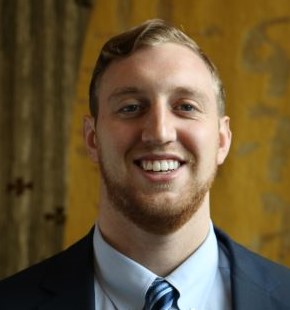By Jim Cline
 A case currently pending before the US Supreme Court may challenge the Court’s previous holdings that workplace speech that touches on a public employee’s “job duties falls outside the protection of the First Amendment. The Lane v. Franks involved an Alabama Community College employee who was terminated in retaliation for his subpoenaed testimony. The 11th Circuit Court of Appeals ruled that because his testimony was in furtherance of his actual job duties, it did not fall under the “job duties” exception to the First Amendment enunciated by the Supreme Court in 2006 in Garcetti v. Calleballos.
A case currently pending before the US Supreme Court may challenge the Court’s previous holdings that workplace speech that touches on a public employee’s “job duties falls outside the protection of the First Amendment. The Lane v. Franks involved an Alabama Community College employee who was terminated in retaliation for his subpoenaed testimony. The 11th Circuit Court of Appeals ruled that because his testimony was in furtherance of his actual job duties, it did not fall under the “job duties” exception to the First Amendment enunciated by the Supreme Court in 2006 in Garcetti v. Calleballos.
Scotusblog describes the key facts of Lane:
It would be difficult to find more sympathetic facts for the protection of a public employee. After Edward Lane became the director of a program for at-risk youth at Central Alabama Community College (CACC), he looked at the program’s finances and soon discovered a state representative was on the payroll. He also discovered she had never done any work for the program. His superiors, including an attorney for the college, advised him to let well enough alone. But he terminated the state representative when she refused to show for work; she vowed to retaliate. She was eventually indicted and Lane testified before a federal grand jury and — pursuant to a subpoena – at her two federal criminal trials for mail fraud and fraud involving a program receiving federal funds. He was terminated between the two trials.
Despite these compelling facts, the 11th Circuit, applying Garcetti, held that Lane’s actions were part of his job duties and, by definition (at least under Garcetti), were not speech on a matter of “public concern” falling under the protection of the First Amendment. To more completely understand the distinction between protected “public concern” speech and unprotected “job duties” speech, a review of Garcetti and the cases before and after it is necessary.
To determine if public employee speech is protected under the First Amendment, courts conduct a “balancing test.” The threshold question in applying the balancing test is whether the employee’s speech may be “fairly characterized as constituting speech on a matter of public concern.” Whether an employee’s speech addresses a matter of “public concern” must be determined by the content, form, and context of a given statement, as revealed by the whole record.
In 1983, in Connick v. Myers, the Court distinguished between employee speech on matters of “public concern,” which it found to be protected, and matters only of personal concern which it found not to be protected. In its decision, it overturned a lower Court ruling, finding that an assistant district attorney had been unlawfully terminated by the district attorney for circulating a questionnaire which primarily focused on office morale and the office transfer policy. (The employee had been the subject of recent transfer which she had taken issue with). The court found none of her questions alone were constitutionally protected except for one, which pertained to whether employees had felt pressure to work on political campaigns for certain candidates. The Court found that this one question did not otherwise change its characterization as being “an employee grievance concerning internal office policy”, so her claim was dismissed.
Since Connick, the courts have had to determine whether worked related speech was concerning primarily (1) a public concern, or (2) a personal workplace grievance or concern. If an employee’s comment does not touch a matter of public concern, the speech loses the protection of the First Amendment. The public concern standard is a threshold test.
In the years following the Court’s 1983 ruling, the lower federal courts were widely divided on how they determined whether or not speech was a matter of public concern or related to a “mere” personal workplace grievance or issue. In 2006, the Connick test was eventually overshadowed by, but not entirely displaced by, an even more restrictive workplace test: the “job duties” standard. In Garcetti v. Ceballos, the Supreme Court imposed a more restrictive rule governing speech within the work place.
Ceballos was a Los Angeles prosecutor who had filed an office complaint about potentially untruthful warrants. He questioned whether the cases associated with the warrants should be pursued. He later claimed that he suffered retaliation as a result of raising those concerns. The Supreme Court concluded that Ceballos complaints were presented in the course of his job duties and were not part of an exercise of a citizen speaking.
The Court explained that “speech which owes its existence to an employee’s professional responsibilities” is not protected by the First Amendment. On the other hand, speech which has ‘no official significance and bears similarities to actions taken by numerous citizens everyday’” is not within an employee’s job duties and “would be protected by the First Amendment.”
In determining whether speech was or was not made pursuant to an official duty,
“the listing of a given task in an employee’s written job description is neither necessary nor sufficient to demonstrate that conducting the task is within the scope of the employee’s professional duties for First Amendment purposes.”
Rather, determining whether speech is pursuant to one’s job duties is context specific and does not turn on one’s actual job description.
The Garcetti decision has been widely criticized as blocking public employee speech rights within the workplace. In fact, the decision does restrict public employee speech rights significantly beyond the Connick standard, but does not leave all work related speech unprotected. The operative question is whether the speech is part and parcel of the employee’s job or whether it is something else, such as whistleblowing speech. The lower courts have found it very difficult to consistently implement the distinctions created in Garcetti, and its durability is doubtful.
Since 2006, Court decisions have been all over the map as to what speech is inside or outside the Garcetti “job duties” standard. One significant (and ironic) factor of whether speech is part of an employee’s duties is whether the employee “complaints up the chain of command, or instead relays his concerns to persons outside the workplace.” For example, the Ninth Circuit a police officer’s conversation with his superiors about an arrest is has been deemed a part of the officer’s duties, but his deposition as a witness in a retaliation lawsuit was “clearly” not part of the officer’s job. (Clearly the Ninth Circuit would also have found Lane’s speech protected.
The Ninth Circuit has generally applied the “job duties” exclusion in a narrow manner. In a number of times since Garcetti, the court has declined to apply the job duties exclusion even for speech which had a connection to workplace concerns:
- In Karl v. City of Mountlake Terrace, an Administrative Assistant’s deposition supportive of an officer suing the department was protected speech, not part of job duties.
- In Freitag v. Ayers, correction officer’s complaints about hostile working conditions due to inmate behaviors presented to Inspector General and State Senator considered protected speech, but complaints presented to prison managers deemed part of “job duties” and unprotected speech.
- In Marable v. Nitchman, a Washington State Ferry system engineer’s complaints outside the chain of command, including to the State Auditor, were found to be protected speech.
- In Eng v. Cooley, a prosecutor’s criticism of supervisor about information leaks and public complaints regarding retaliation found arguably protected speech.
- In Robinson v. York, a Police Sergeant denied a promotion to Lieutenant after filing misconduct reports and testifying in a lawsuit about discrimination was found to have undertaken protected speech.
- In Anthoine v. North Century Counties Consortium, an employee who skipped chain of command and reported to Chairman about employee misconduct presented protected speech.
- In Posey v. Lake Pend Oreille School District, a school security officer filing complaint regarding schools safety and emergency procedures presented an arguable claim that he acted outside job duties.
- In Ellins v. City of Sierra Madre, an officer leading a police union’s “vote of no confidence” effort against the chief, was found to have spoken on a matter of protected “public concern” and are deemed to be the speech of a private citizen, not duty related speech.
- In Dahlia v. Rodriguez, an officer that reported fellow officer misconduct to his union and an internal investigator was protected “public concern” speech.But in some other recent cases, the Ninth Circuit as disallowed First Amendment retaliation claims that likely would have survived before Garcetti:
- In Brownfield v. City of Yakima, the court found that an officer’s complaint about lazy coworkers an unfair supervision was not protected speech.
- In Hagen v. City of Eugene, an officer alleged to have suffered retaliation after complaining about the lack of SWAT Team safety standards was found to have engaged in work related speech unprotected by the First Amendment.
- In Huppert v. City of Pittsburgh officers’ grand jury testimony about misconduct of fellow officers was not protected speech.
The ruling in Huppert was later overturned by the Ninth Circuit in 2013, by Dahlia v. Rodriguez. In Dahlia, the court emphasized, contrary to its earlier Huppert ruling, that it is not whether the “broad job description” requires reporting official misconduct, but whether the narrower “practical” question of whether the job duties are within the employee’s “professional duties.”
The irony that has been noted about the job duties test is that employees, who skipped the chain of command to present complaints, are more likely to be protected under the First Amendment. Those employees who file complaints with their supervisors or managers are generally found to be presenting the information as part of their job duties and, therefore, outside the protection of the First Amendment if they suffer retaliation for such complaints. The Garcetti standard allows protection for whistleblowing speech, but generally leaves public employees unprotected if they attempt to address issues at a lower level, such as through the chain of command. The Ninth Circuit in Dahlia and other decisions is clearly attempting to define the Garcetti ruling narrowly. Some other Federal courts are doing likewise.
The Ninth Circuit is not the only circuit seemingly applying Garcetti in a narrow a manner as arguably possible. The Garcetti “job duties” test has been widely criticized. Likely the Supreme Court will ultimately have to readdress and clarify its Garcetti ruling. In the pending Lane case the Court may offer a bit of clarification, but without wholly backtracking on its earlier decision. But Lane may be a stepping stone towards a narrowing of the controversial “job duties” test.



